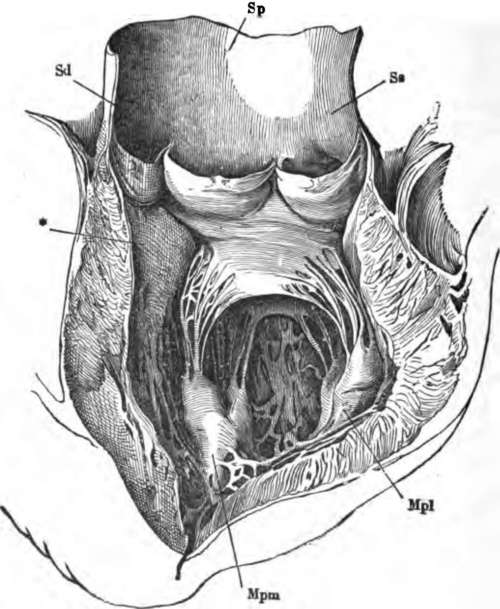How The Heart Is Nourished
Description
This section is from the book "The Human Body: An Elementary Text-Book Of Anatomy, Physiology, And Hygiene", by H. Newell Martin. Also available from Amazon: The Human Body.
How The Heart Is Nourished
The heart is a very hard-worked organ, and needs an abundant supply of nourishment. Its walls are much too thick to allow this to soak in sufficient abundance all through them, from the blood flowing through its cavities; accordingly they are permeated by a very close network of capillary blood vessels. These are supplied by the right and left coronary arteries(Kg. 58), which are the two very first branches of the aorta, and the blood from them is collected by the coronary veins and poured by them directly into the right auricle.
Where do the venae cavœ carry it? Where does it pass from the right auricle? What vessel arises from the right ventricle? Into what does the pulmonary artery divide? What happens to each branch? How do the branches finally end? Into what is the blood which flows through the pulmonary capillaries collected? How many pulmonary veins are there? Where do they end?
State briefly the course of the blood flow.

Fig. 59. The left ventricle and the commencement of the aorta laid open Mpm Mpl. the papillary muscles. From their upper ends are seen the chordae tendiness proceeding to the edges of the flaps of the mitral valve. The opening into the auricle lies between these flaps. At the beginning of the aorta are seen its three pouch-like semilunar valves.
What are the coronary arteries ? The coronary veins ?
Continue to:
- prev: The Vessels Connected With The Different Chambers Of The Heart
- Table of Contents
- next: Valves In Human Heart
